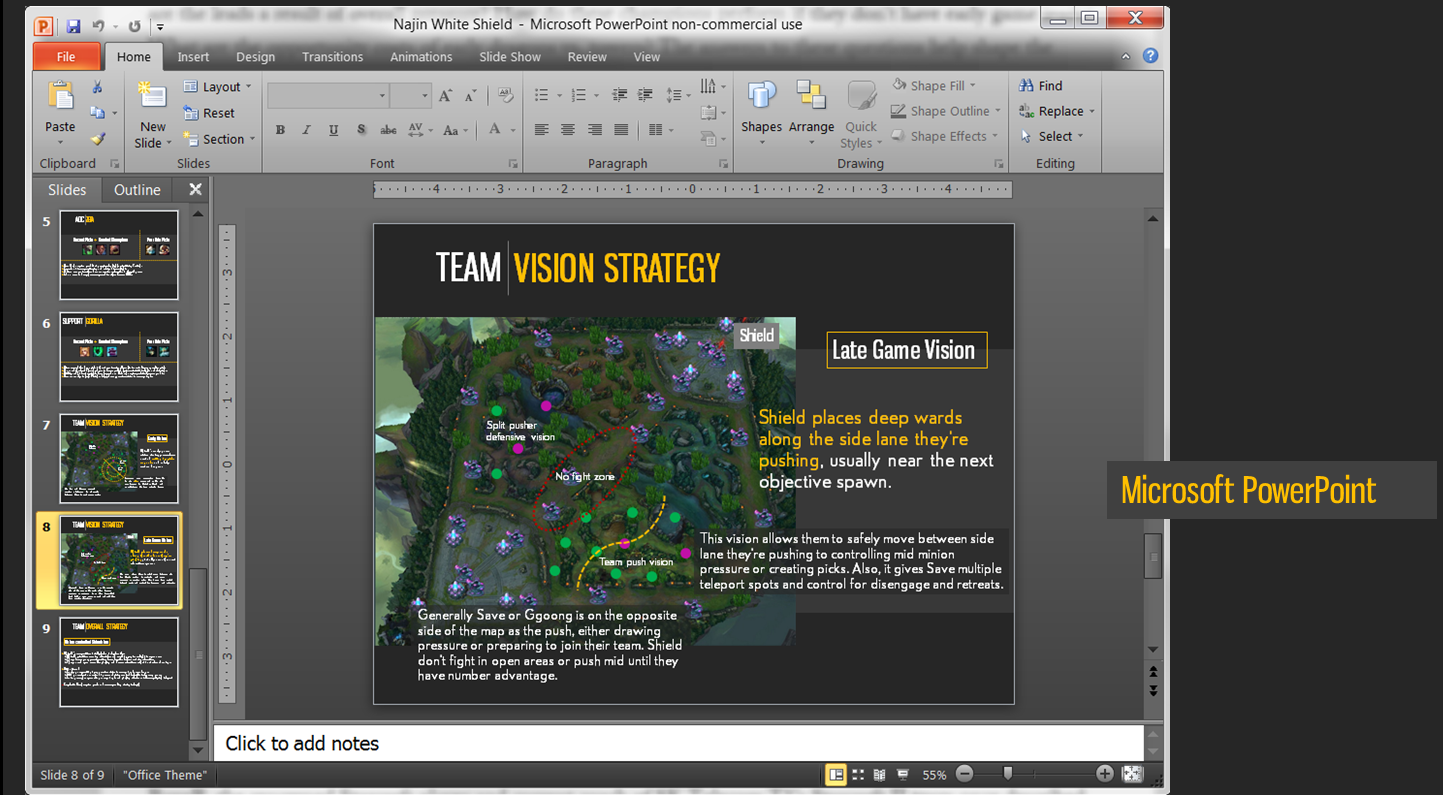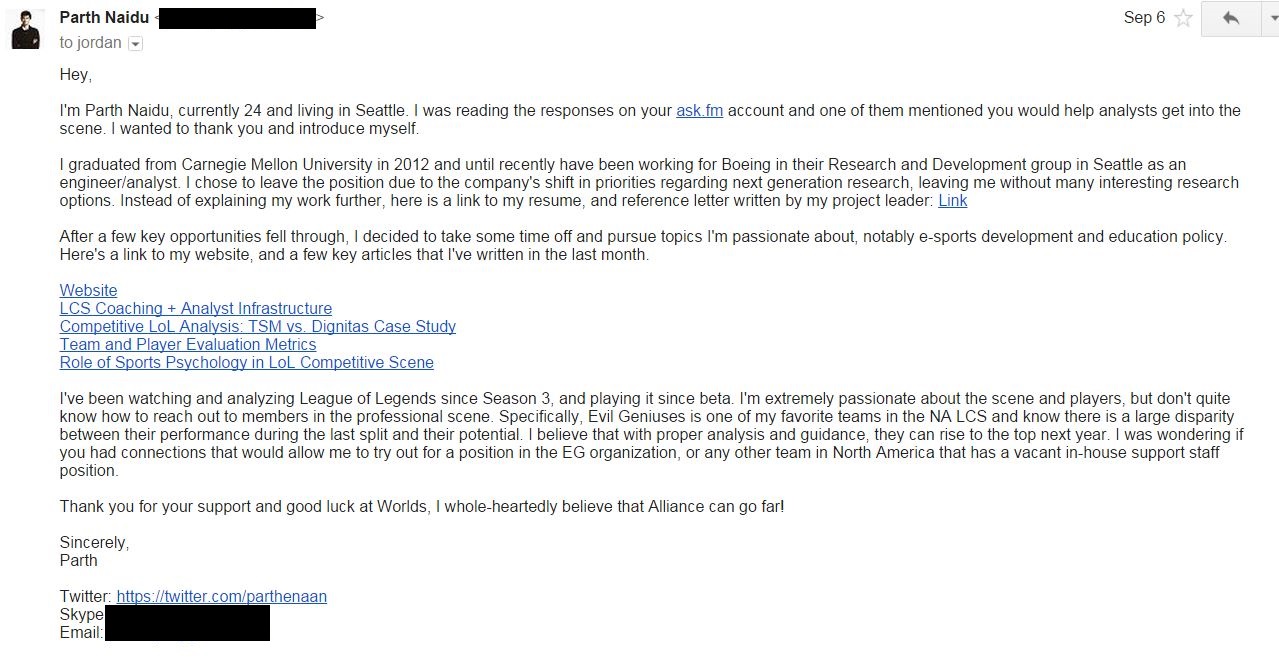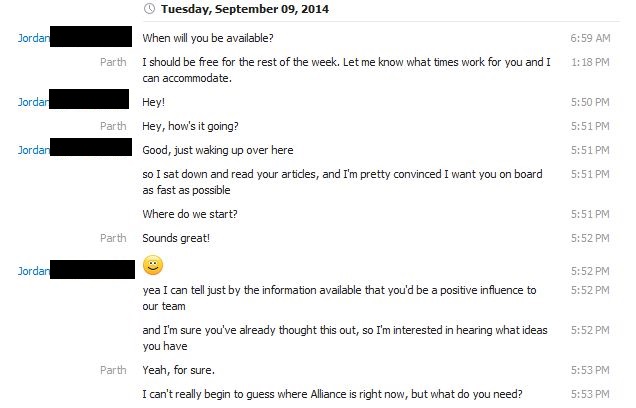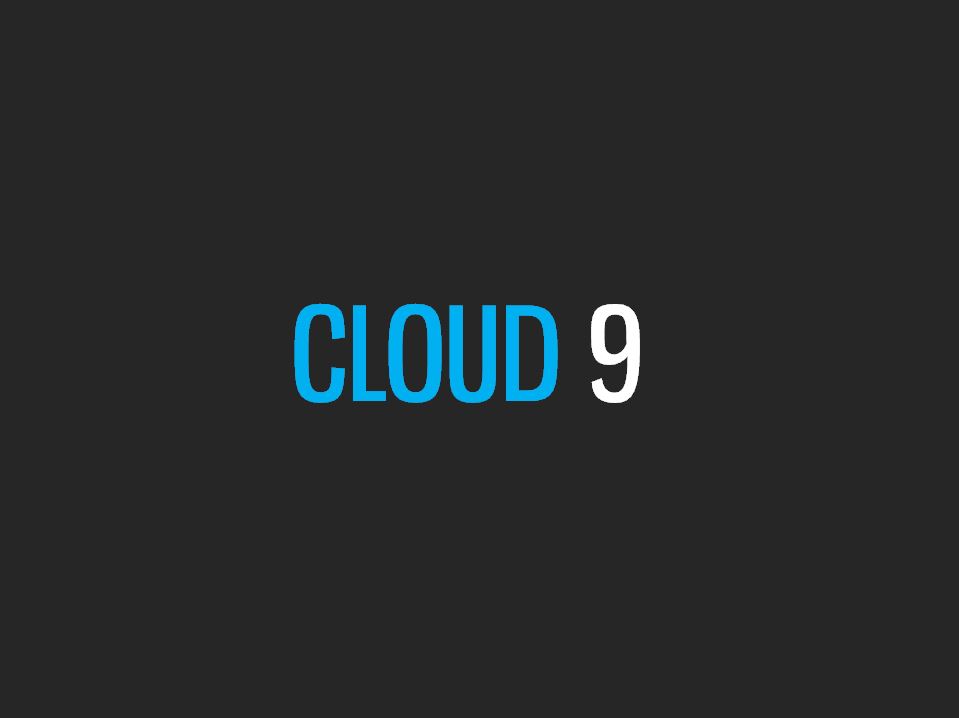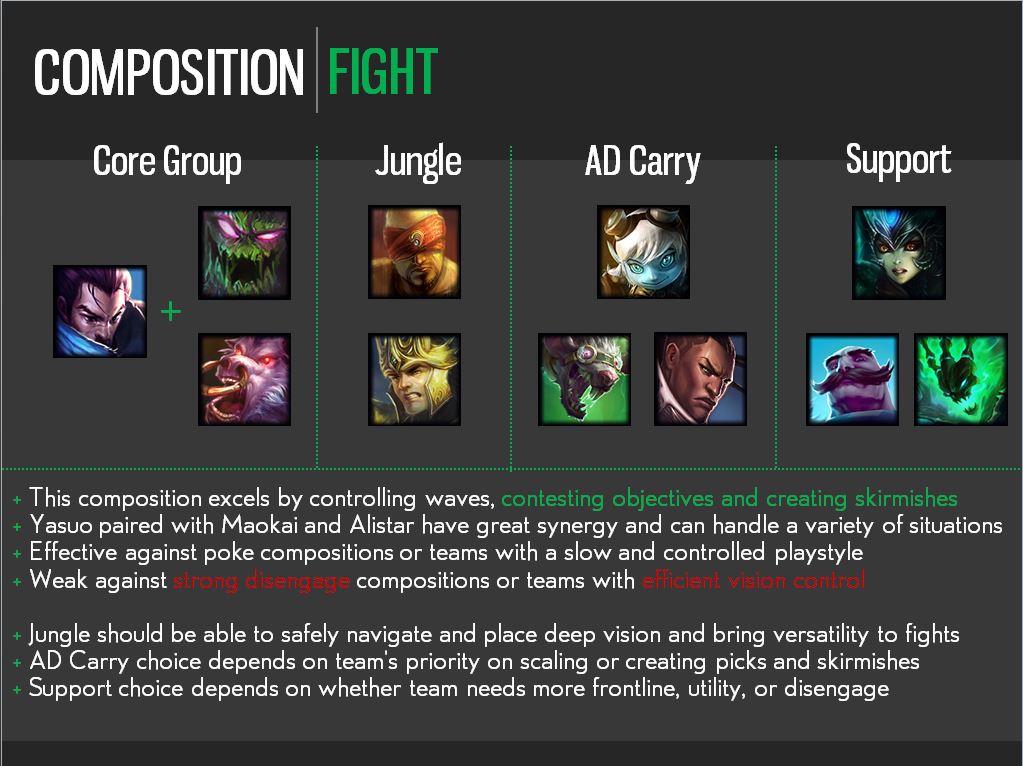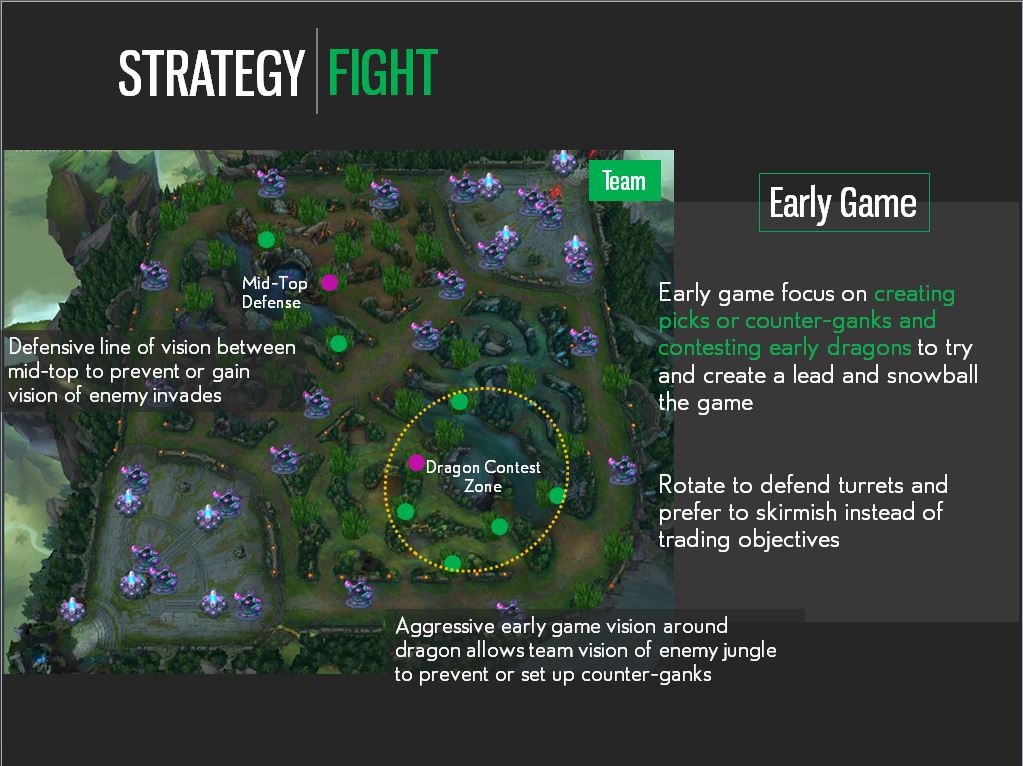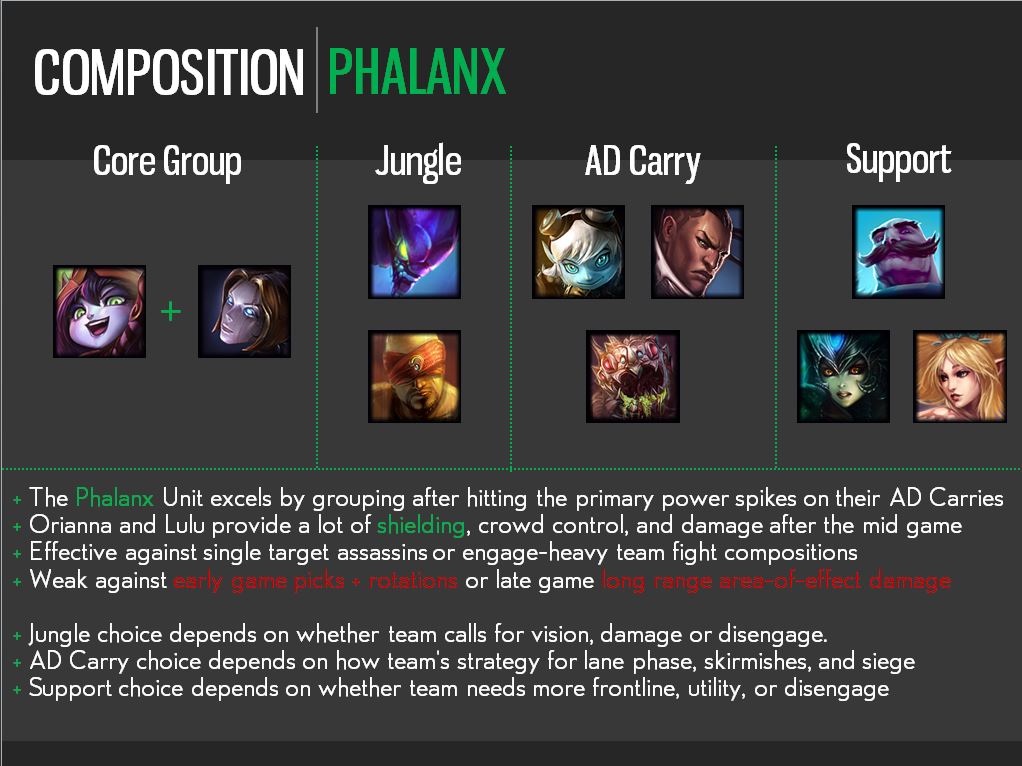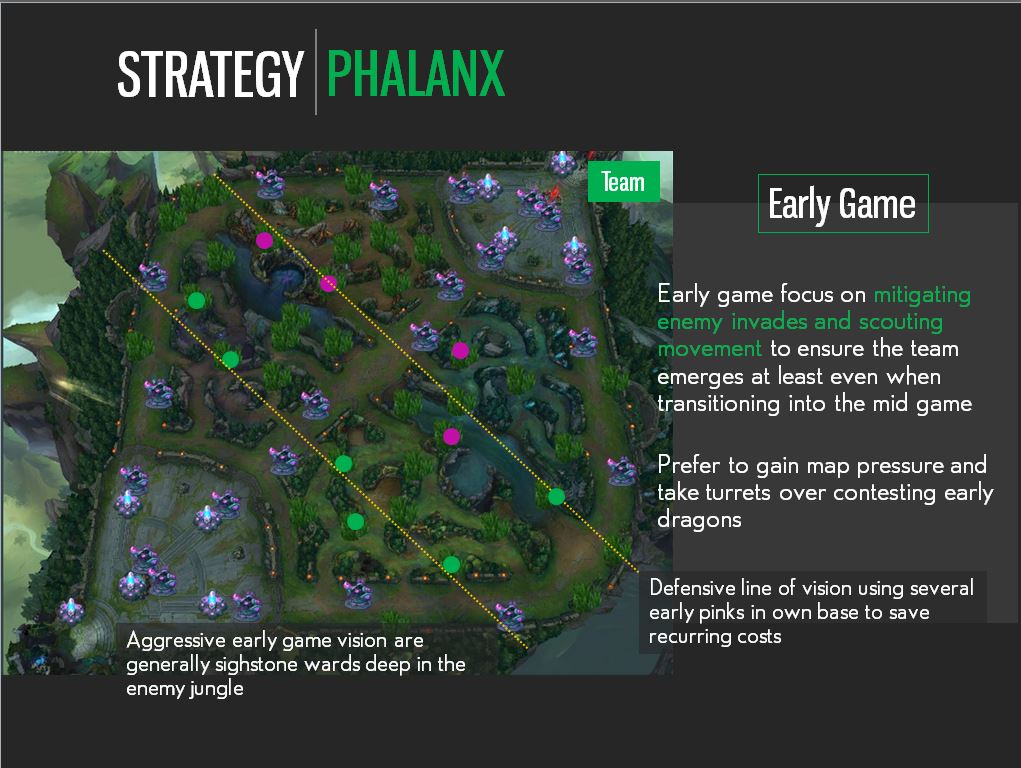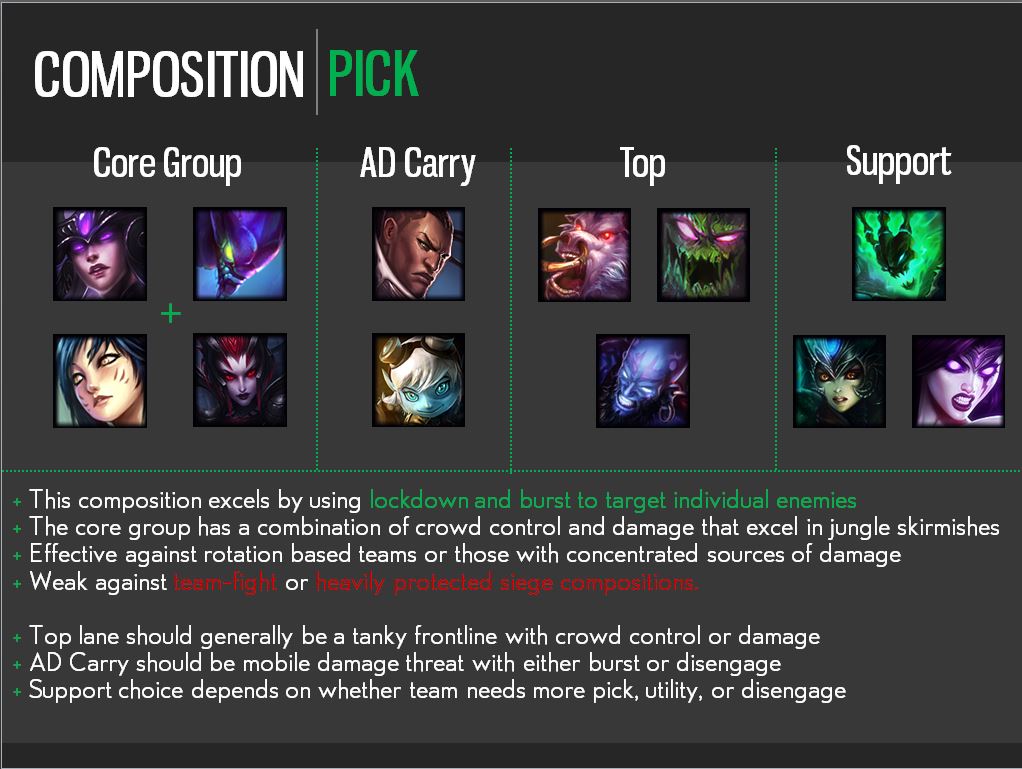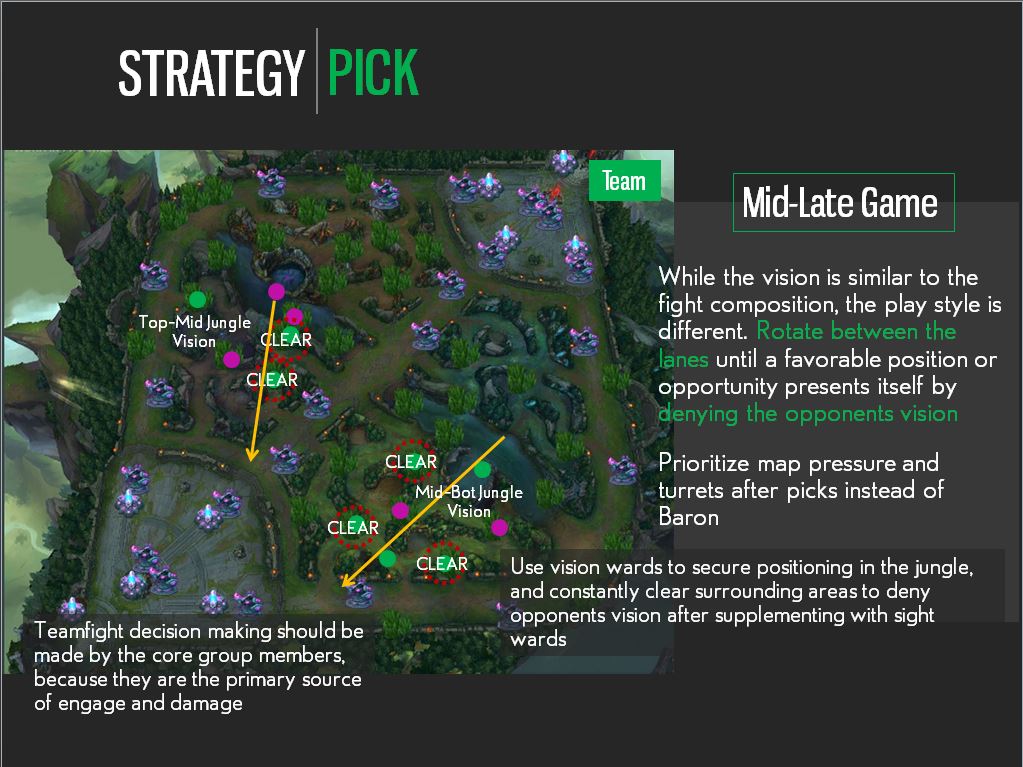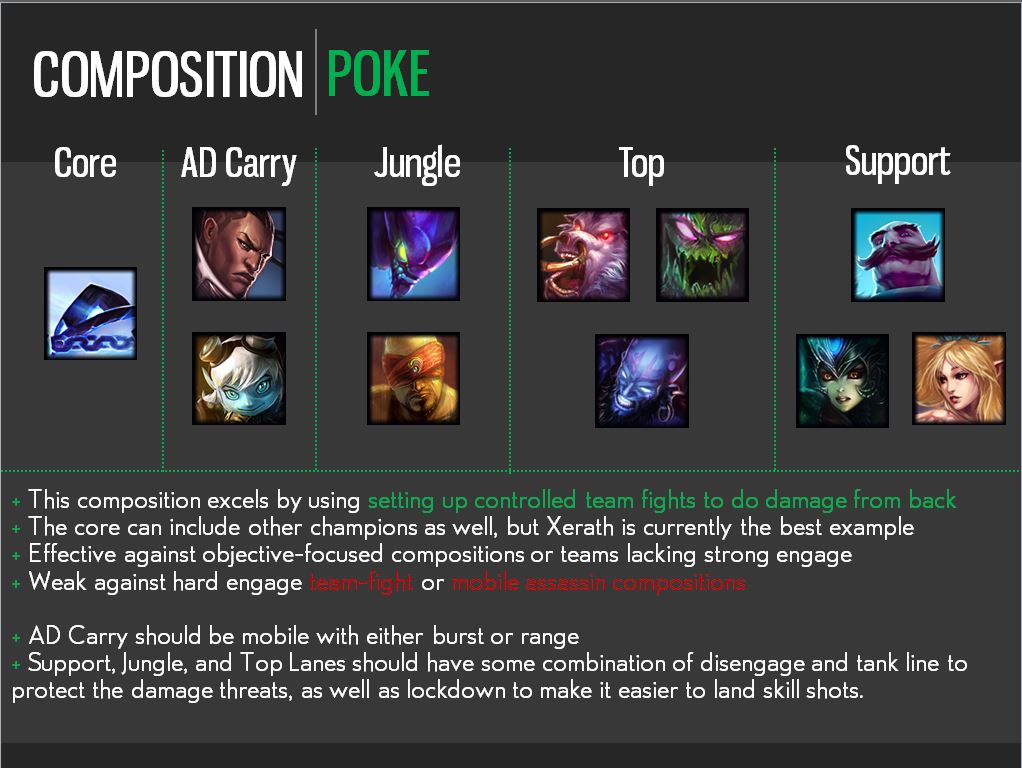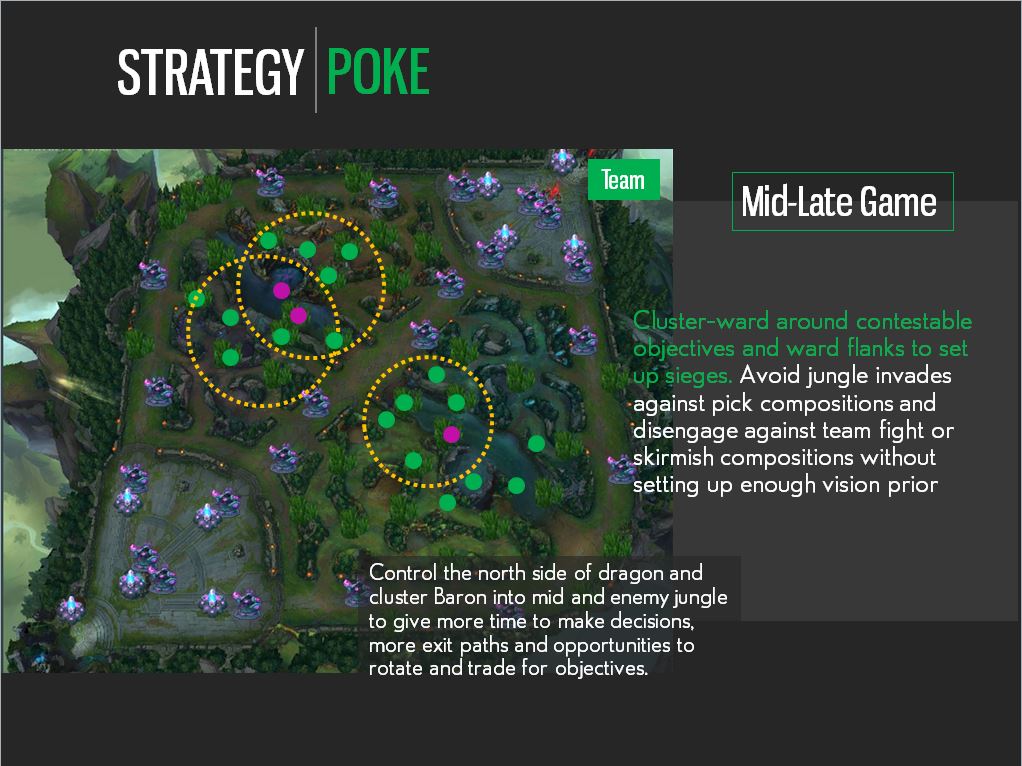Despite the tremendous strides competitive League of Legends has made recently, the industry is still fairly young with regards to how players interact with the support staff and management. While the responsibilities of the coaching role have reached a state of general definition from developing team's social and performance elements, the analyst role still remains relatively obscure with regards to scope and impact. An idea popularized in the past few years is that analysts most commonly watch a lot of competitive games and advise on pick/bans or strategy. While this is an important aspect this idea presents a fairly reductionist visualization of the role.
A comprehensive definition of an analyst is a person who maintains a high level understanding of the game by collecting as much relevant data as possible, constantly reviewing the data with experts in the community to interpret the details, and reporting on meaningful and actionable subset of information. The most challenging aspects of the role are remaining objective in the face of constant barrage of subjective commentary, cultivating and maintaining a network of relationships that can constantly help you critique your analysis, and most importantly, efficiently communicating all relevant information to the remaining support staff and team.
The figure above shows a sample subset of analyst directives, where the width represents relative importance to the team and the height represents the time invested or the analyst’s expertise in the topic. The figure will look different for teams depending on their priorities and the amount of support staff they have. For example, a team with a large infrastructure can generally pick up multiple members that excel in niche areas or devote time to specific sections, while it may make more sense for smaller teams to pick up a full time analyst who can focus on all general aspects, depending on their long-term goals.
Scouting
Different Regions
In line with the community perception of analysts, support staff often track games from different regions, notably both LCS regions along with Korean and Chinese leagues. A year or two ago, many teams didn't have the ability to invest in a proper coach or analyst, leading to the dominance of empirical analysis where the Korean competitive scene served as an adequate model to draw inspiration from. However, the top teams from other regions adapt the opportunity costs of their in-game decisions to maximize the efficiency of their picks and strategies, something that can't be determined by observation. Thus, if the assumptions are mistranslated, the utility that teams gain from using that innovative advantage decreases considerably.
In addition to watching the other regions, analysts are also responsible for translating the efficacy of particular strategies and picks within the context of their local region or team. Analysts help build an identity around the unique proclivities of their players and establish the team's original hierarchy of pre-game and in-game opportunity costs before using empirical data to bolster their strategy. Essentially, analysts are responsible for watching other regions, but the underlying purpose is to help the team and players make informed decisions about their own strategies instead of simply mimicking other teams. Recurring benefits of scouting different regions include new strategies, playstyles, or meta-shifts that have a seed in external regions. Short term benefits include having a more holistic perspective of opponents at international competitions like IEM Katowice or World Championships.
Upcoming Opponents
Scouting specific opponents has a more refined and deliberate approach. At the beginning of each week, a scouting report helps break down each opponent the team is preparing for and it includes everything from player's champion pools and play styles to general level 1s and lane swaps. Depending on the team, there's also a mention of damage output and gold allocation throughout the game and pick/ban patterns to consider what the team prioritizes before and in-game. After a discussion with other members of the coaching staff, it's decided how this impacts the week's scrim practice. For example, if the opponent is proficient at prioritizing a certain role or champion the team is not comfortable playing against, there's a discussion about whether it's worth altering play style to prepare counters or simply rely on specific champion bans. Finally, the day before each match there's another discussion finalizing pick/ban contingencies and specific in-game plans where the coach then gets the team's final feedback to make any changes.
Tools of the Trade
From post-game data to Riot's API, there's an abundance of readily available information for teams to consider. After extracting the data into a reasonable format, Tableau and Matlab allow analysts to dynamically consider data or perform in-depth analysis. For example, if a team wants to focus on the early game, the data helps find other teams that generate early game leads to answer questions like, is the gold concentrated in specific lanes or are the leads a result of overall pressure? How do these champions perform if they don't have early game leads? What are the opportunity costs of early dragons vs. towers? The answers to these questions help shape the direction of the conversation, and offer constructive precedence players can reference.
Generally, the data mentioned above isn't seen by coaches or players; analysts act as an intermediary source. But there is data that needs to be presented and manipulated by coaches and players. Excel and PowerPoint are traditional and powerful tools to help accomplish the task. Online excel documents shared within the team tracking scrim information let players go through and see where they did well, what they did poorly and help them present their arguments to the team regarding picks and strategic direction. PowerPoint or other presentation software helps summarize information for vision control, scouting reports, pick/bans and more. Finally, video editing software like Adobe Premiere allows analysts to put together presentations for reviews or introducing new concepts.
Introspective Analysis
BoxeR, the renowned Starcraft player and current coach of SK Telecom T1's Starcraft II team once described his strategy as one in which "even if the opponent had predicted it, he cannot stop me." Day[9] similarly advises his audience that "strategy and solid play doesn't revolve around tricks, surprises, or hidden information, but very solid planning and crisp execution."
An implicit and understated responsibility of analysts and support staff in general is to help team's development, rather than merely searching for new tricks or scouting other regional strategies. More often than not analytical resources are focused on external data, while team development follows a reactionary path rather than a proactive one. A methodology that reflects an infantile approach to delayed gratification, teams focus heavily on the short term in order to win games, rather than establishing a foundation for future success. New teams consistently fall prey to this trap, and while they may enjoy sporadic successes, they lack a cohesive identity and rarely achieve greatness.
In order to help direct team growth, support staff have to recognize the type of team approach that will best represent their players. Some teams are innovative and enjoy playing combinations of new or off-meta picks, while others are reflexive, those who have diverse pre-existing strategies and can adapt to various picks and game situations. Teams can be adaptive, those that heavily research and are the first to pick up and master the new meta styles, while other teams prefer a conservative approach, and shift slowly, letting their skill and teamwork carry them through the transition. Committing to an identity helps team create long term plans regarding how to approach patches, tough opponents, tournaments, roster changes and more.
Similarly players' development can take different routes. Mechanically adept players learn certain champions and playstyles at a different rate than tactical players. Other players are neither but are more open to the learning process, allowing the support staff to mold the player that the team needs. Analysts have to recognize the type of players they are working with in order to recommend plans for adapting during patches or preparing for upcoming tournaments and games. Investing the time to learn about the players and team before setting long term and short term goals is important for any team that wants to set themselves up for long term success.
Final Thoughts
After the coaching role is established, the analyst role becomes the next most important on the support staff. There is a considerable amount that analysts can be responsible for depending on the goals of the team. Some teams simply want to place well in their region, while others want to win worlds or create a lasting team legacy. As the expectations of the team increase, it becomes critical for the organization to invest in good analysts who not only knowledgeable about the game and various scenes, but can also communicate and present their ideas in a clear and persuasive manner. For a team expecting to maintain a top place in the regional standings and doing well at international competitions, the reasonable expectation is 60-80 hours of analysis work per week, from planning and creating content to scouting regions and analyzing scrims and more. We are slowly approaching an era in team e-sports where player and team development is going to become more important than raw talent, and surrounding the coach with a strong supporting infrastructure will ensure a team's long term success.


